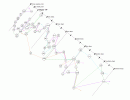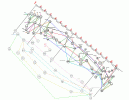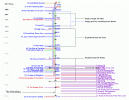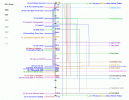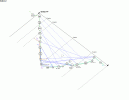In my first writing class we had an assignment to say how we overcome writers block. But it is basically how I write anyway, no plan, just discovery writing.
I'll post it here because story always emerges even here in what was 'supposed' to be a technique essay.
 500 word Assignment: “How I deal with writers block”
500 word Assignment: “How I deal with writers block”
I look at clouds and sometimes see a fluffy puppy or the profile of an old man, kinda. I am enviously aware that there are others who can look at those same clouds and see a white rose or Marylin Monroe.
Today I look at a rectangle of white paper without a trace of imagery, a uniform flat sky waiting for me to sculpt something from that blank mist and give it meaning, but there is no breeze, to swirl and form shadow and light
This is live action, typed as it happens Welcome inside the head of this writer as he tackles this weeks assignment.
Everyone has their own methods for escaping the inspirational doldrums. One of mine is “the room”.
The room starts as a space with metaphorical dice by it.
The room can be anywhere from Peru to The international space station.
Let’s roll the dice…
We are in an apartment in Tokyo
Hmm Who else is in the room?
Mother, brother, wife or lover?
It’s Sumiko, a semi feral elf of a girl who has done a couple of jobs for me in the past . She kneels on, rather than sits in the chair like a cat waiting to pounce. Smiling or frowning through our conversation, the expressions that are ‘expected’ rather than actually felt, this is the mask of the street survivor.
Who, or what is outside?
Roll again
Hiroshi, he is in his apartment two blocks away. He has turned states evidence in a Cocaine smuggling trial. Soon he will implicate me, not by intent but the police will inevitably join the dots that lead to my door.
Not good.
Why is Sumiko here?
She has a talent, she is a one trick pony but it is one hell of a trick.
She can walk through any house and commit the layout to memory.
She has been in Hiroshi's home.
Later, she can run through that house in complete darkness, because, she runs through the model in her head, not what her eyes see.
This, makes her the perfect Ninja assassin...


